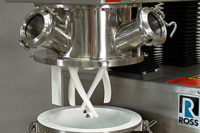Next-Generation Vertical Double Planetary Kneaders Mix It Up
Vertical double planetary kneaders bridge the gap between two familiar mixing technologies.

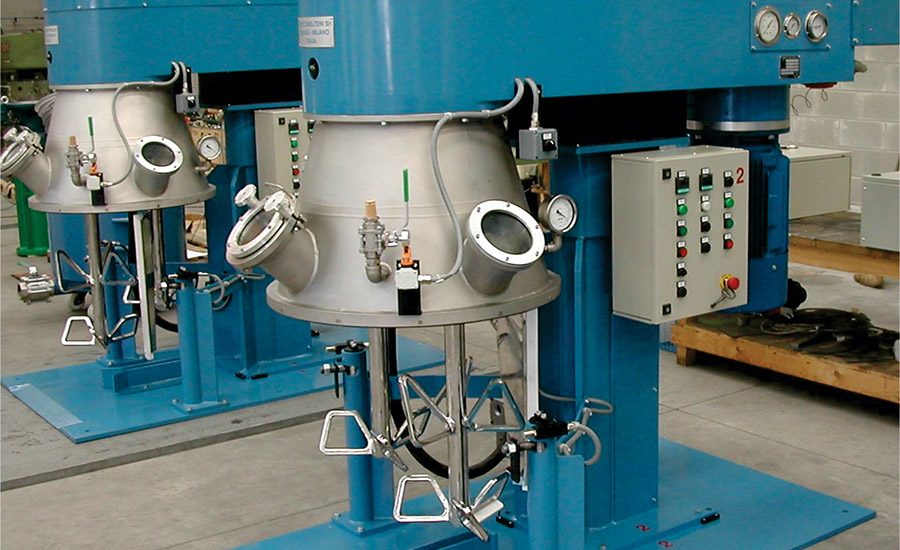

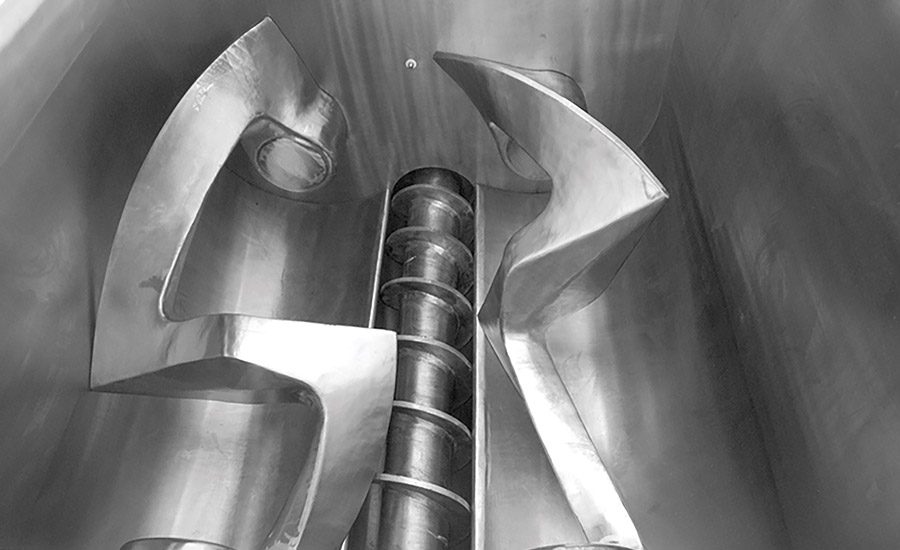
Tangential sigma blades and center-mounted discharge screw of a kneader extruder. CMX.
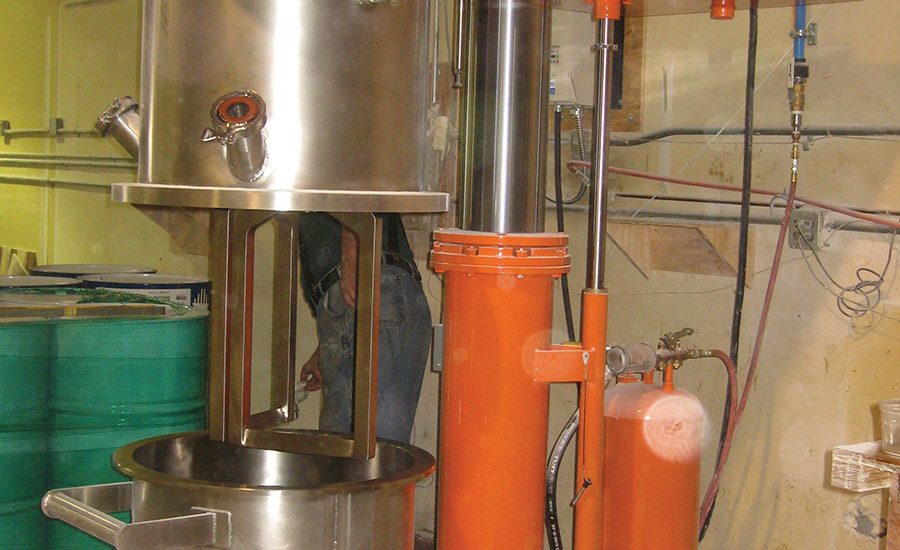

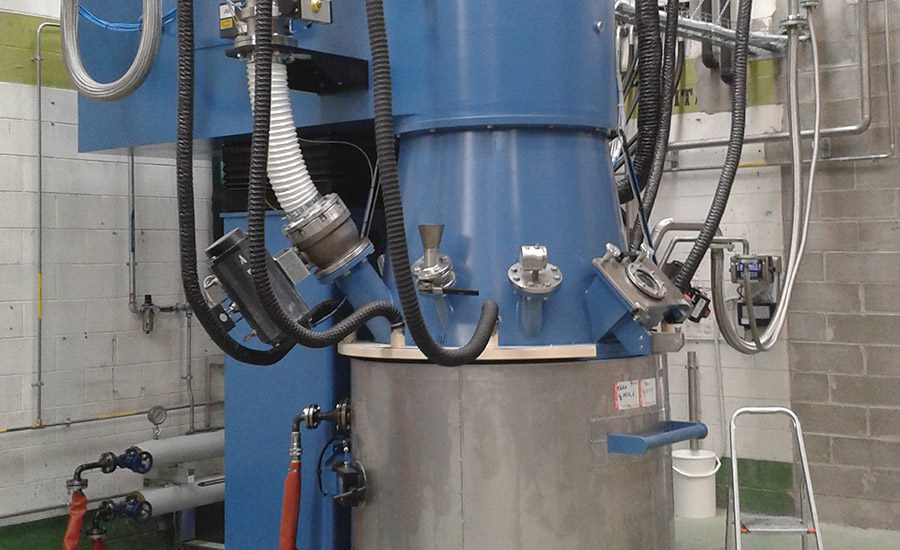
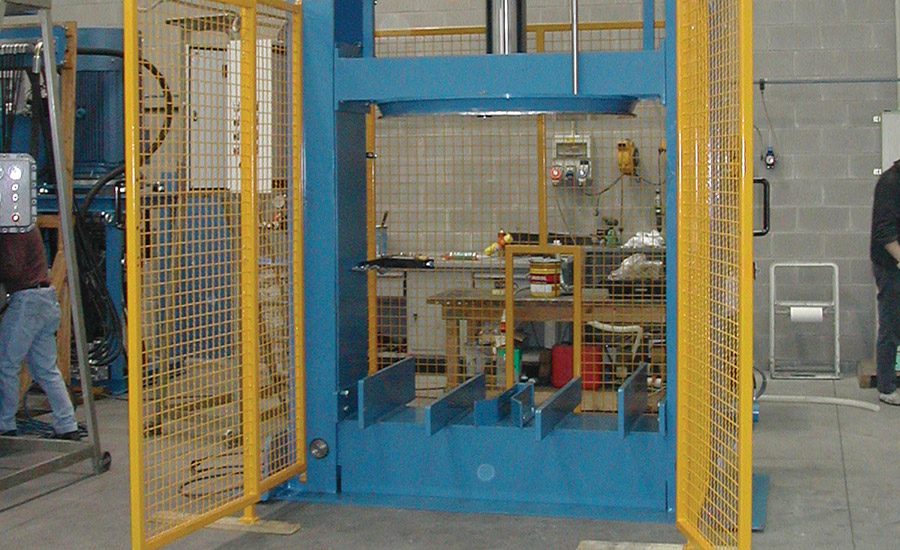








Whenever and wherever high-viscosity adhesives and sealants need to be mixed, the choices have been clear cut: either the classic vertical double planetary mixer or the proven double-arm sigma blade mixer have been the mixers of choice when the product viscosity rises past the hundreds of thousands of centipoise, and well into the millions of centipoise.
Vertical Double Planetary Mixers
The vertical double planetary mixer is characterized by its dual planetary stirrer blades that rotate on their own axes while revolving around a central axis. These blades run at equal speeds, and their paths are timed through a planetary and sun gear arrangement, ensuring that the overlapping blades never come in contact with each other.
Being a top-entering type of mixer, the vertical double planetary mixer lends itself to “removable vessel” configurations that allow for the mixer blades to be hydraulically lifted from the mixing vessel, and the vessels to be on wheels so that they can be rolled in and out of the mixer.
The discharge of finished product from this type of mixer can be through high-pressure “ram-type” discharge systems or, if the product viscosity is sufficiently low, by tilting and pouring the product out of the mixing vessel—a less desirable approach.
This configuration allows for a batch/semi-continuous process strategy, whereby one mixing vessel can be in place in the mixer, another can be in the discharge system, and other vessels can be staged with raw ingredients for subsequent batches, or can be in a washing area being prepared for new batches.
Double-Arm Sigma Blade Mixers
Double-arm sigma blade mixers are extremely heavy-duty horizontal mixers that use two sigma, or “Z”-type, blades that are either tangential to one another or intermeshing, where the blades cross each other’s paths. Intermeshing designs require the blades to run at the same speeds and use gearing to ensure that the blades do not contact one another.
The tangential blade design of the double-arm sigma blade mixer allows for the blades to run at differential speeds, which can create high shear forces within the product being mixed. Versions of the tangential blade design have each blade driven by individual motor drives in order to create extremely high internal shear forces. Regardless of whether the double-arm mixer has tangential or intermeshing blades, the blades are supported on both ends, making this type of mixer better-suited for the highest viscosity products.
Discharge of finished product from the double-arm sigma blade mixer is through tilting of the mixing trough in the “tilt kneader” configuration or more typically by an extrusion screw, such as in the “kneader extruder” configuration.
At higher than 2 million centipoise, the double-arm sigma blade mixer has traditionally been the only viable design for handling the highest viscosity products, due to its strength and robust construction. However, this design has many pitfalls. Despite the efficiency of the kneader extruder in discharging high viscosity products, this design can leave a significant amount of product behind in the mixing trough and the discharge barrel, resulting in less than desirable product yields, sometimes 80% or less. The shaft entry points of the double-arm mixer are immersed in the product being mixed, leading to cleaning difficulties and cross-contamination concerns.
Selection Criteria and Design Limitations
The vertical double planetary mixer is typically used for product viscosities from 100,000 to 2 million centipoise. As most of these designs employ electric motors driving gear reducers, the available torque across the processing speed range is inconsistent. This type of mixer also has a top-supported drive, with the stirrer blades supported on one end only. Exceeding the limit of this machine’s viscosity capability can result in deflection of the stirrer blades, and in extreme cases, failure of the blade, stirrer shaft, and even the planetary gearbox.
All things being equal, most engineers would choose the vertical double planetary mixer over the double-arm sigma blade mixer for mixing their high-viscosity formulations. The capital costs are significantly lower, the vertical configuration allows for removable vessels and discharge systems that can produce discharge yields of over 95%, and cleaning between batches is considerably easier—almost eliminating the possibility of cross contamination. However, the upper viscosity limitation of these designs had eliminated them from contention when the product viscosity rises above 2 million centipoise, until the advent of the Vertical Double Planetary Kneader.
A Game Changer
The next-generation Vertical Double Planetary Kneader is a family of ultra-heavy-duty planetary mixer designs that bridge the gap between the traditional vertical double planetary mixer and the double-arm sigma blade mixer. The designs of the Vertical Double Planetary Kneader family start with extremely robust steel structures that rigidly hold the agitation system components and mixing vessel, which eliminates any movement or deflection in the structure during the mixing of extremely high-viscosity products. The stirrer blades and shafts are constructed to minimize bending, despite these elements being top-supported, with no bottom support. Innovative mixing vessel retention designs firmly hold onto the mixing vessels to prevent the familiar “rock and roll” phenomenon that is typical with traditional vertical double planetary mixers. A heavy-duty electrohydraulic cylinder is employed to raise the stirrer blades from the mixing vessel.
A principle difference between the older designs and the next-generation designs is the application of hydraulic motor drives in place of electric motors. Compact in size, hydraulic motor drives allow for the installation of higher horsepower motors because the hydraulic power units (HPUs) are located externally, away from the mixer. The main advantage of hydraulic motor drives is that they deliver constant torque to the mixer blades across the entire speed range of the motor, unlike electric motors that only deliver their full torque at or near their top speed. The motor drive allows the formulator to mix very high-viscosity products at the lowest to the highest blade speeds without any compromise in torque.
Because of the stirrer blade design of the next-generation Vertical Double Planetary Kneaders, the blades are not timed through fixed gearing, and thus, allow for the blades to run at differential speeds. This feature helps the mixers impart the highest shear stresses to the product, emulating the effect of the tangential double-arm mixer design.
Because of the compact nature of the hydraulic motor drives, as well as the differential blade speed design, these Vertical Double Planetary Kneaders can use multiple motor drives in one mixer. In its most flexible design variant, each stirrer blade can be independently driven by its own hydraulic motor, as well as a third motor driving the revolution of the gearbox. An important design aspect of these mixers is that, unlike the revolving gearbox in the product zone typical of the traditional double planetary mixers, the planetary gear arrangement of the next-generation designs is completely isolated from the product zone by a revolving disc that is sealed on its periphery, in addition to any shaft entry points.
The next-generation designs also include important features such as heavy-duty wall scraping devices and innovative revolving temperature probes for accurate measurement of high-viscosity products.
Bridging the Gap
With the advent of the next-generation Vertical Double Planetary Kneaders, the process engineer now has an option to mix high-viscosity products in a mixer design that offers all of the conveniences of the vertical double planetary mixer, combined with the ultra-high-viscosity capability of the double-arm sigma blade mixer, at a capital cost that is much closer to that of the vertical double planetary mixer.
The next-generation design offers benefits including product viscosity capability to 10 million centipoise, removable mixing vessels, and the ability to use it with discharge systems. Because these mixers are top-supported, all shaft seals are outside of the product, eliminating cleaning and cross-contamination issues.
For more information, phone (855) 885-0269, email info@cmxprocess.com or visit www.cmxprocess.com.
Looking for a reprint of this article?
From high-res PDFs to custom plaques, order your copy today!




.jpg?height=200&t=1672175877&width=200)
